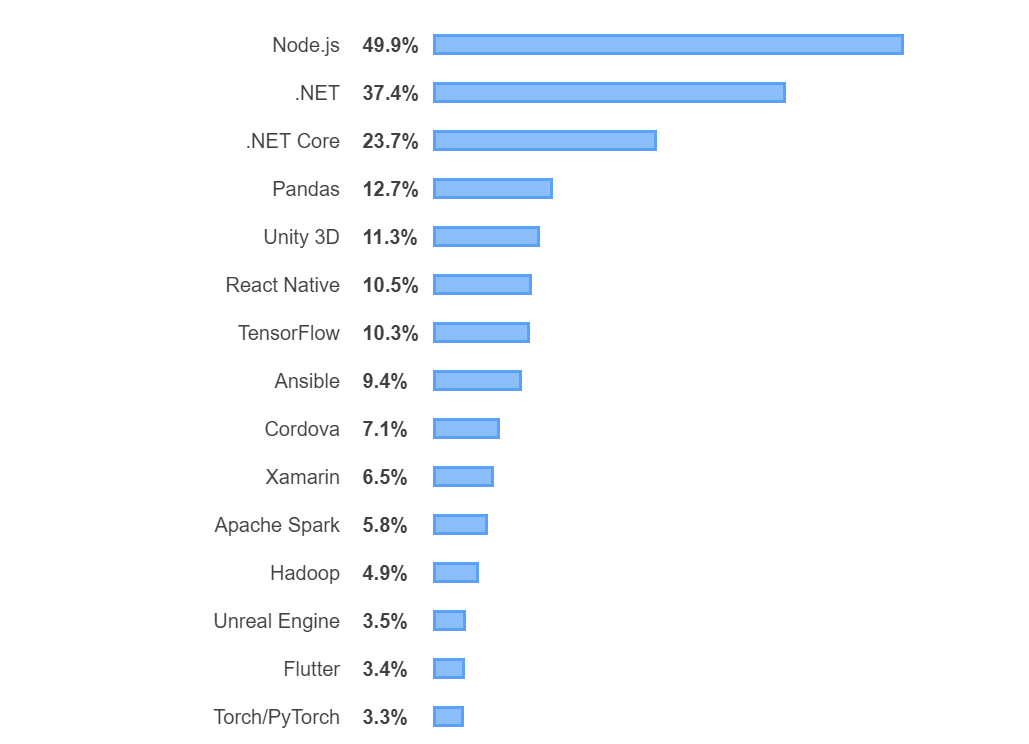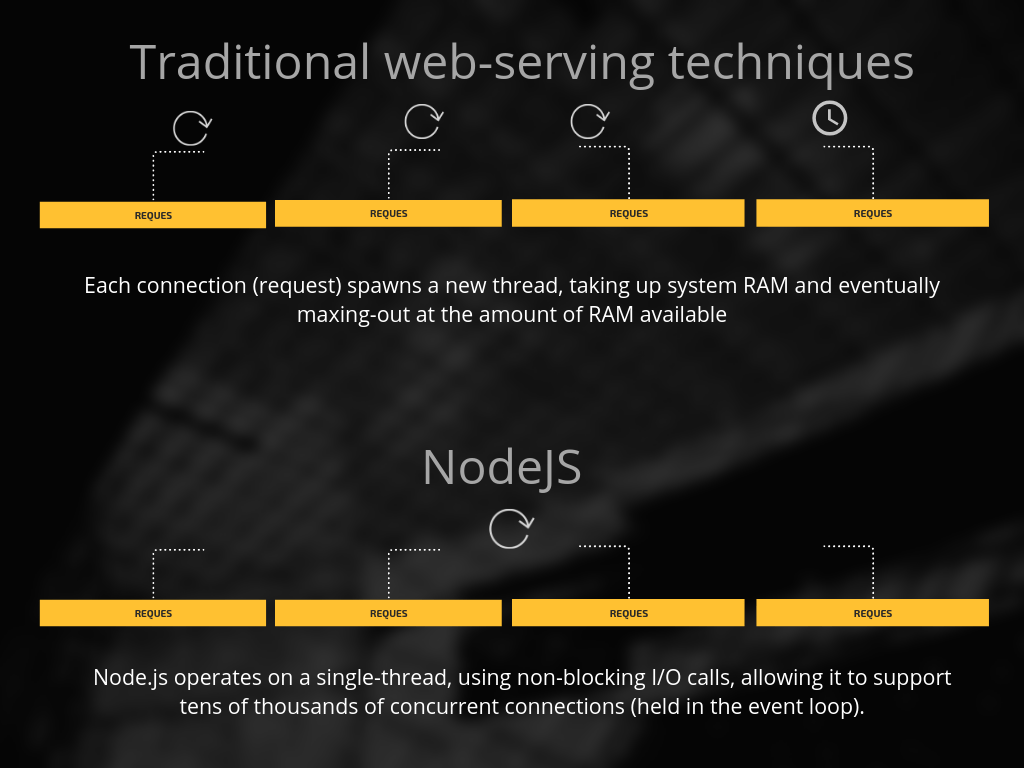Serverless Approach Is Moving Node.js Forward. Are You In?
August 6th, 2019
We at KitRUM use Node.js a lot. According to Stackoverflow survey, 49,9% of its respondents also do so. Node.js is the most commonly used framework in the “Other Frameworks” category, which means not web-only frameworks, but a variety of others as well.

Recently, our CTO has written a great article about Serverless approach and moving to microservices.
But do you know that Serverless approach is making a huge influence on the popularity and the principles of Node.js usage? It’s actually becoming a strong contender for pushing Node.js into the future. If you haven’t switched to either yet, you should do some research to help, however, here are some answers to some questions you may have regarding Node.js and Serverless.
What actually is Node.js?
Node.js is a cross-platform built on Google Chrome that uses Javascript outside of the browser, to run across devices in a light-weight, efficient process, taking up little space and data, which is good for those busy data/software development companies who require the data/run-time for other uses.
Whenever you choose to hire dedicated NodeJS developers and ask them why this framework has to be applied for the project, you will always get the answer that Node.js is fast, adaptable, outstanding and coders-friendly. Right. The technology is evolving and being realized in even more projects in 2019.
You can use NodeJS while developing a desktop application or a large-sized enterprise app. The characteristics, which make NodeJS an exact selection for custom app development, are:
- Outstanding I/O abilities
- Slight code
- Quick development speed
- Performance
What is Serverless?
Odds are you have heard of Serverless approach, possibly already use it, but there’s a part of you that still don’t quite understand what it is. Serverless arrangements have gained strong popularity, especially with large production companies such as Netflix. It’s a computing model that uses the cloud to manage the infrastructure and provisioning of servers. Many businesses have invested thousands of dollars into serverless approach, which means it’s highly unlikely it’s going anywhere anytime soon. Your business no longer needs to manage the server, because the cloud vendors do it for you.
One of the most straightforward methods of Serverless approach is Microservices. They are basically helpful in increasing the maintainability of code. This is mostly deployed in large-scale or enterprise-level projects.
By utilizing Microservices, multiple teams can separately work on different modules of a project and integrate these modules to shape the final product. So if you need to finish a project quicker and hire a dedicated NodeJS team for it, they have to be connoisseurs of Microservices.

Microservices are decoupled, hence are performance-oriented too. With their use, you can increase the execution speed and scalability of your NodeJS project.
If one part or module or your project breaks down, you won’t need to take the entire code down, but that module only. This part of NodeJS Microservices enhances its flexibility and reusability markedly. The most beneficial point is, Microservices work strictly with any tech if your project requires to interact with a cross-technology solution.
How will Serverless impact Node.js?
Node.js is the language of Serverless. Without the need to worry about clustered servers, we can focus on the code, the language, that makes Serverless so amazing. It’s important, however, to recognize that Serverless is just as important to Node.js as it is the other way around. Moving from traditional server bases into the realm of Serverless can be a difficult decision to make – and it shouldn’t be, because it’s the easiest move you could make.

The rapid development of web technologies has created a demand for new tools that could enable fast and efficient interactions with users. In reaction to this, JavaScript acquired a huge number of standard and external libraries, predefined modules and frameworks. It required specialized solutions and compilers. That’s where the Node.js comes in, quickly gaining popularity among developers due to its numerous advantages.
NodeJs is a JavaScript run-time environment created on Chrome’s V8 JavaScript engine. Websites using NodeJs include Twitter, Google AMP, AliExpress and other famous projects.
Its numerous advantages include high extensibility, ability to handle multiple requests (even better than other systems), single module caching, high performance and easy scalability. Choosing NodeJs also results in substantial savings in manpower and timing because it allows developers to write both the front-end and the back-end in JS.
In case you want to build an app providing real-time interactions and response, Node.js may be on the top of your list of appropriate solutions due to the following features:
The event loop that enables non-blocking I/O operations
Status of a full-stack JS that serves both the client and the server-side applications
High efficiency for multiple simultaneous server requests
Node.js has three famous frameworks, each offering its distinct set of functional benefits:
- Sails.jsIs compatible with the majority of databases, which makes it especially popular among backend developers.
- Meteor.jsA powerful framework that allows simultaneous work on client and server sides, which works best for smaller apps.
- Express.jsIs one of the most powerful and widely used universal frameworks for servers.
If you plan to hire dedicated NodeJS developers, you can be sure that you will get a reasonable project timing and budget. NodeJS is popular for building a wide range of products, from large-scale enterprise apps to small on-premise programs. It’s gaining more and more popularity and is deployed even by such famous tech giants like Yahoo!
By having an understanding of Node.js, you’re already ahead of the game! Because Serverless is becoming the star of the software programming world, it can only mean that it will carry Node.js into the future with it – so it’s time to grab ahold








